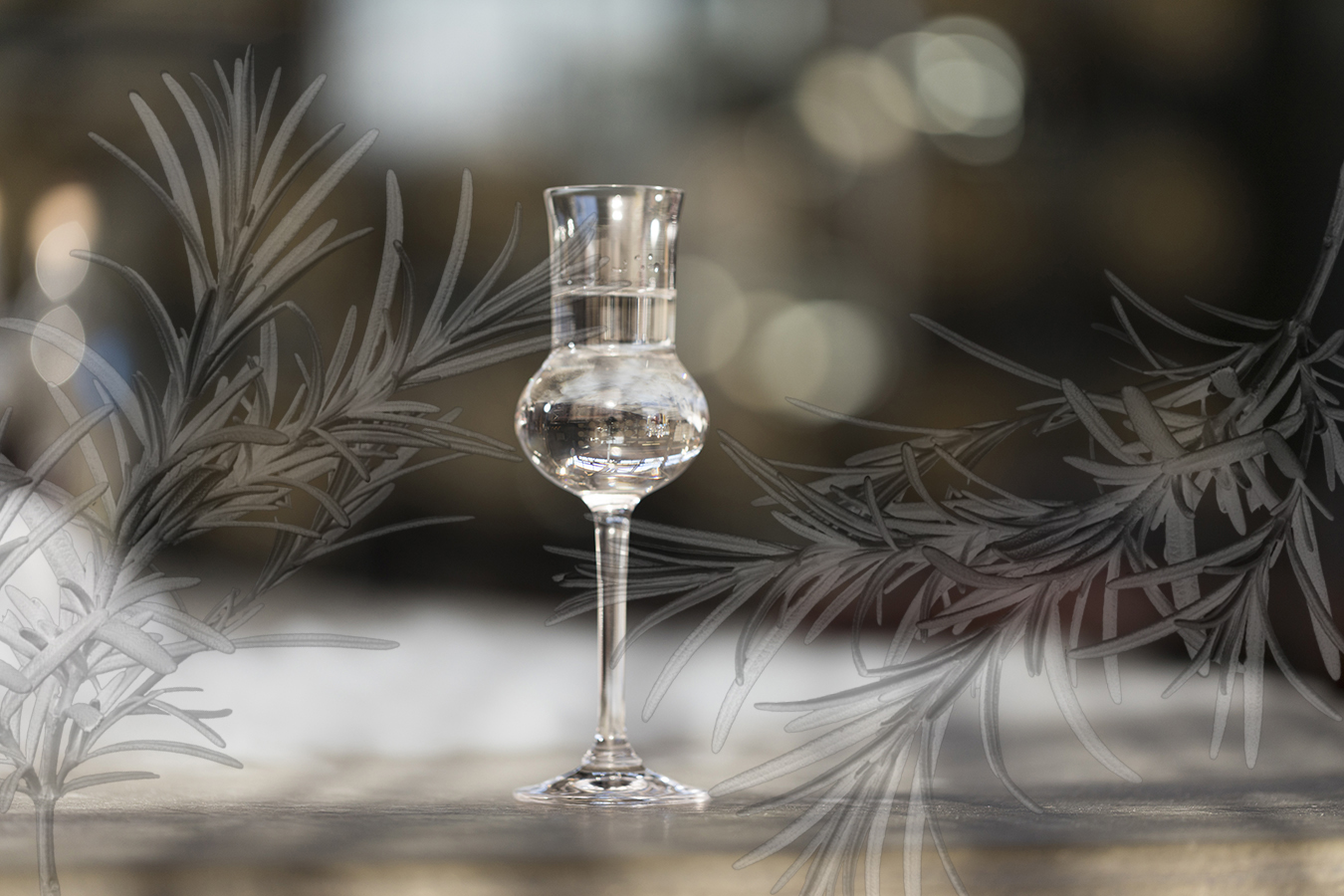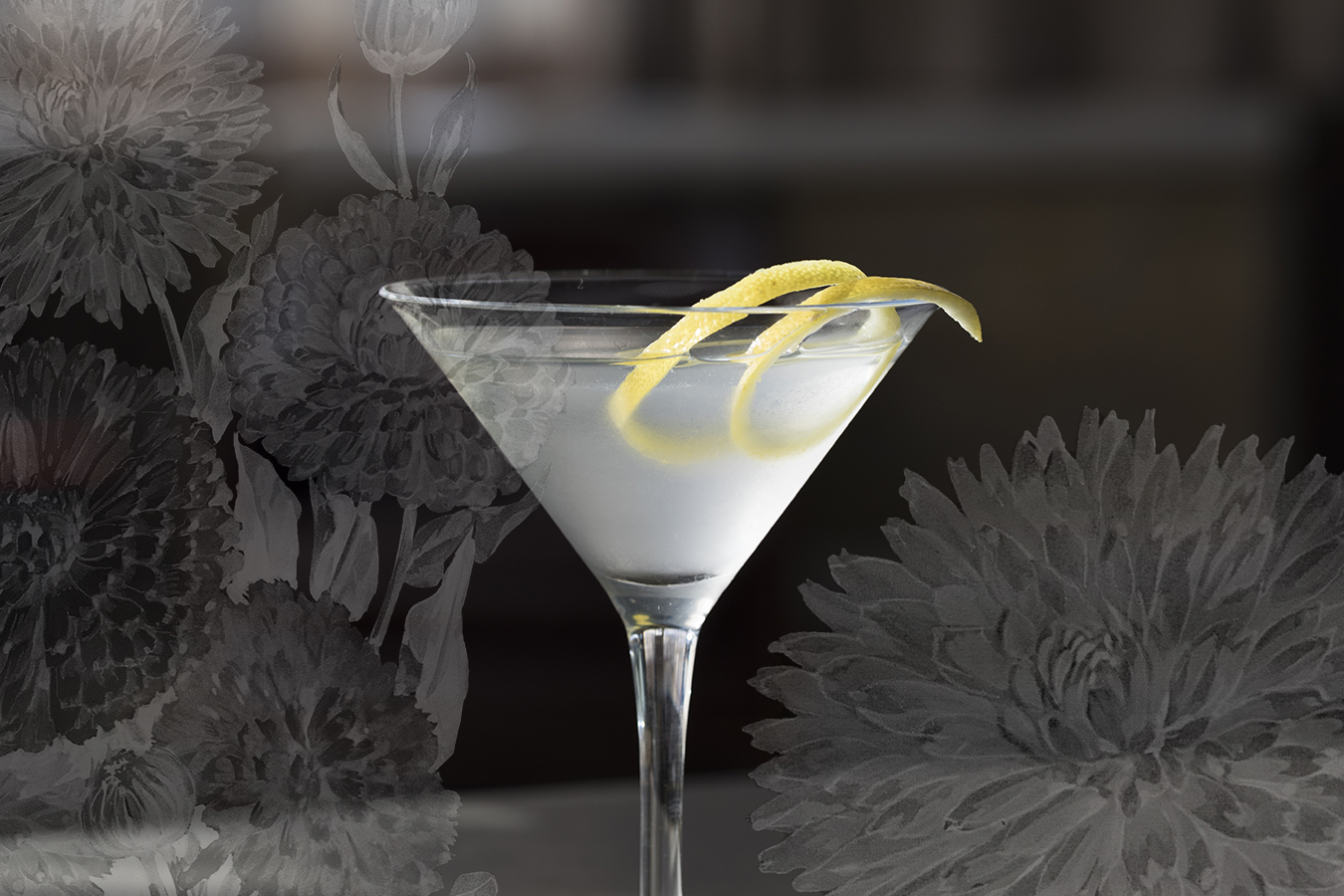
Cherrie Water
Distilled ‘for Thrift & Taste’

WHL
In the 1800s, distilled spirits were made by both professional distillers and by individuals in their households. This recipe for Cherrie Water originated from a handwritten “Book of Receipts” by Ann Ward, written around 1724. The spirits Ward made at home, such as this one, would have been primarily for household medicinal use. Individuals like Ward didn’t only include medicinal recipes in their journals, however; all sorts of useful household information ranging from human and veterinary medicine to cooking and mischief were recorded there.
In addition to the recipe for Cherrie Water, transcribed below, Ward included culinary recipes such as “A ffrigasye of Chickins or Rabbitts,” “A Rice pudding to Bake,” “To make a seed cake,” and “To Pickle little Gerkine Cowcummers.”1 Mingled among the recipes for food are those for human medicine and animal care. “The Purging Ale to be taken Every Springe” and “Snaile water which is good for any weakness to Recover Nature and the Jandy’s or Consumption” highlight the role that Ann Ward had in helping to maintain the health of the people in her household.2 She even included a recipe to keep horses healthy: “Balls for Horses in Hunting Season,” which she asserted would “keep your Horse free from … swel’d Legs & give him a Good appetite… They are very good for Coach Horses.”3
In contrast to the household production of spirits like Cherrie Water, our recipe for Water of Flowers comes from The London-Distiller, Exactly and truly shewing The Way (in words at length, and not in mysterious CHARACTERS and FIGURES) to draw all Sorts of Spirits and Strong-Waters: To which is added Their Vertues, with Additions of many Excellent Waters, published in 1667. Author John French includes a section called “Rules and Directions for extracting and drawing of Low-Wines and Spirits, to be Re-distilled into Rich Spirits, Strong Waters, or Aqua-vitae” in which he describes the regulation of the Company of Distillers over distillation methods. He criticizes the cost-saving practice of some distillers to not re-distill their products: “What they save by their seeming thrift, they lose double in the excellency of their Wares.”4 Thus, according to French, “The directions following are henceforth by them and every member of the Company [of Distillers], and their Successors, duly and exactly to be observed and practised from time to time for here everafter.”5
‘Everyone knows what nail polish smells like.’
The differences in the ways that people distill today, both for thrift and taste, still leads to varying qualities of alcohol. Bentley Gillman, head distiller at Tattersall Distilling, described the necessity of removing the “heads and tails” of distilled alcohol, which contain alcohols that are more toxic. “If you’re not making aggressive cuts, more acetone and methanol remains [in the product.] It tastes funky. Everyone knows what nail polish smells like. Think of a bell curve: we cut the low parts to focus on the curve. We throw away more, but it gives us a better product. If you’re aggressive, you’re getting less but better [product]. The better it is before it’s aged, the better it will be after it’s aged…. At Tattersall, we cut aggressively to get the notes we want to accentuate. It also means you don’t get a hangover with our products.”
CHERRIE WATER: Historic Recipe Transcription 6
Take of the best red Cherries two pounds stone them & bruise ym. Wth. a spoone, then put to them nine pints of of the best white wine four – ounces of Cinemon, three ounces of Nutmegg’s bruised half a handfull of the topps of Rosemary, as much Of Balme, half a handfull of Sweet margerum – Shred y.r herbs & lett all infuse together twenty Four hour’s, So Still itt In a glass Still, or Ordinery Stille Lett itt drop upon Sugar Candy or fine Sugar And a graine of Ambergreece with itt if you Like itt.
Tattersall’s Contemporary Interpretation
Tattersall followed this recipe almost to a tee, only reducing the cinnamon and nutmeg somewhat and omitting the ambergris (an oily secretion of the sperm whale). Because this cherrie water is distilled, you’ll need to purchase a comparable alcohol (see below).

Tattersall Cocktail Recipe
Clear Skies Ahead is our historical take on a classic Aviation. Developed in the early twentieth century, an Aviation typically calls for maraschino liqueur, gin, crème de violette, and lemon juice. Using crème de fleur and our historically inspired cherry (cherrie) water cuts down on the sweetness and adds herbal notes that make this a nice alternative to the classic.
• 1 ounce Tattersall gin
• ¾ ounce Luxardo, Maraschino, or Kirsch (store-bought options for Cherrie Water)
• ½ ounce Tattersall Crème de Fleur (store-bought option for Water of Flowers
• ¼ ounce lemon juice
• ¼ ounce simple syrup
Shake with ice. Strain.
Pour into coupe glass.
Garnish with lemon peel.
Notes
- Ann Ward, Book of receipts, c. 1724. Manuscript, Wangensteen Historical Library of Biology and Medicine: 9, 22, 30, 27. ↩
- Ward, Book of receipts, 3, 55. ↩
- Ward, Book of receipts, 229. ↩
- The London-Distiller, (London: Printed by E. Cotes, for Thomas Williams, 1667): 1. ↩
- The London-Distiller, 1. ↩
- Ann Ward, Book of receipts, 53. ↩